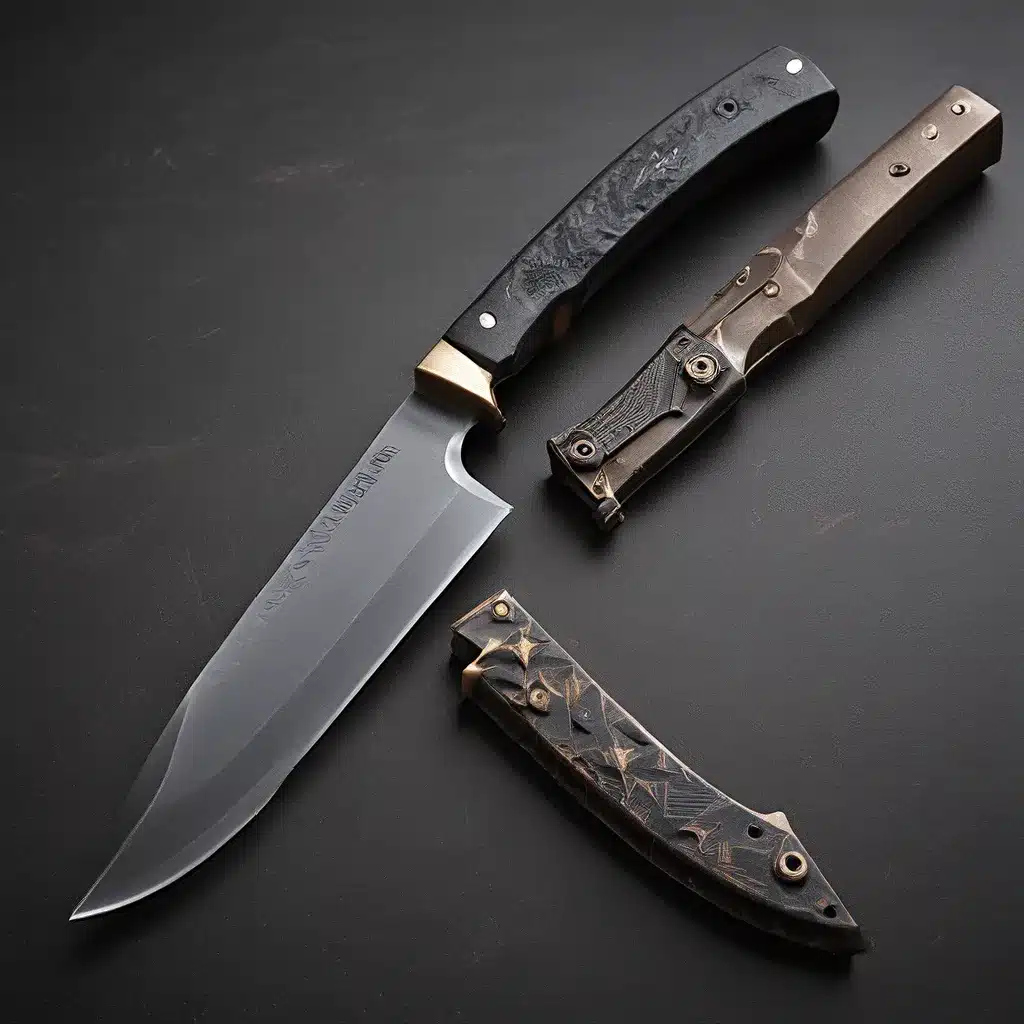
Ah, the world of blades – where form meets function in a delicate dance of precision and power. As a passionate knife enthusiast, I’ve always been fascinated by the intricate mechanics that govern the performance of a blade. And when it comes to understanding the nuances of blade geometry, there’s no better master to learn from than the team at Herman Knives.
Exploring the Anatomy of a Blade
Let’s start with the basics – the different components that make up a knife’s blade. The spine is the thick, sturdy part that runs along the top of the blade, providing strength and support. The edge is the sharpened portion, responsible for the blade’s cutting ability. The belly is the curved section, which can enhance slicing and chopping capabilities. And the tip is the pointy end, often used for piercing or detailed work.
But the true magic lies in how these elements are designed and combined. Blade geometry is all about the precise angles, curves, and proportions that determine a blade’s performance. It’s not just about sharpness – it’s about balance, weight distribution, and the overall feel and functionality of the knife.
The Secrets of Blade Geometry
One of the key factors in blade geometry is the bevel angle. This is the angle at which the blade’s edge is ground, and it can have a significant impact on the blade’s cutting characteristics. A steeper bevel angle, say around 20 degrees, will create a sharper edge that’s better suited for slicing and precision work. A more obtuse angle, around 25-30 degrees, will result in a stronger, more durable edge that’s better suited for chopping and heavier tasks.
But the bevel angle is just the beginning. The blade profile is another crucial element. A drop-point blade, with its gentle curve from the spine to the tip, offers excellent control and versatility. A tanto blade, with its distinctive angled tip, is designed for piercing and focused cutting. And a sheepsfoot blade, with its flat, straight edge, is perfect for tasks that require a safe, non-piercing tip.
The blade thickness also plays a role. A thinner blade, like those found on many chef’s knives, is ideal for slicing and precision work, while a thicker blade, like on a survival knife, is better suited for heavy-duty chopping and prying.
Blade Steel: The Foundation of Performance
Of course, no discussion of blade geometry would be complete without delving into the world of blade steel. The specific alloy used in a knife’s construction can have a profound impact on its performance and durability.
High-carbon steels, like 1095 or O1, are known for their excellent edge-holding ability and toughness. They can be sharpened to a razor-fine edge and maintain it for a long time. Stainless steels, like 440C or AUS-8, are prized for their corrosion resistance and ease of maintenance, but may not hold an edge quite as well as their high-carbon counterparts.
And then there are modern super steels, like CPM-S30V or M390, which offer an impressive balance of edge retention, corrosion resistance, and overall performance. These advanced alloys are often used in the finest custom and production knives, catering to the needs of discerning enthusiasts.
Putting it All Together: The Herman Knives Approach
At Herman Knives, the team understands that blade geometry is not just a matter of aesthetics – it’s a fundamental part of a knife’s overall functionality. That’s why they meticulously design and engineer each of their blades to optimize performance for specific tasks and user preferences.
Take, for example, their Classic Hunter model. With its drop-point blade profile, 25-degree bevel angle, and 3/32-inch thickness, it’s the perfect companion for field dressing, skinning, and general outdoor tasks. The Tactical Utility knife, on the other hand, features a tanto-style blade with a 20-degree edge, ideal for precise cutting and piercing applications.
But it’s not just about the individual blade designs – it’s about how these elements work together to create a truly exceptional cutting tool. The Herman Knives team carefully considers the balance, weight distribution, and overall ergonomics of each knife, ensuring that the user experience is as seamless and intuitive as possible.
Unlocking Your Knife’s Potential
As a knife enthusiast, I’ve come to appreciate the incredible depth and complexity of blade geometry. And working with the team at Herman Knives has been a true revelation, unlocking a deeper understanding of how these design elements can be leveraged to create truly exceptional cutting tools.
Whether you’re a seasoned outdoorsman, a passionate chef, or simply someone who appreciates the art of fine knives, I encourage you to explore the world of blade geometry. Delve into the nuances of bevel angles, blade profiles, and steel alloys. Discover how these elements can transform the way you interact with your blades, unlocking new levels of performance and enjoyment.
Remember, the secrets of blade geometry are not just about the technical details – they’re about unlocking the full potential of your knives and elevating your overall cutting experience. So, let’s dive in and explore the captivating world of blades together!
Herman Knives is the destination for those seeking the finest in custom and production knives, where the art of blade geometry is masterfully crafted into every cutting tool. Discover the difference that precision and attention to detail can make in your everyday tasks and outdoor adventures.


